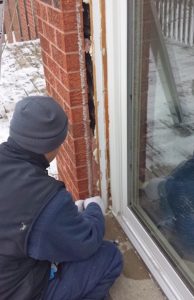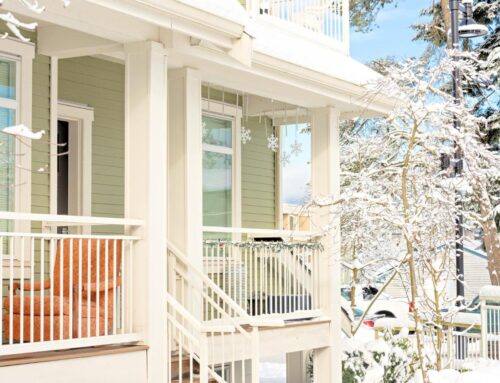Canadian winters can be harsh and unforgiving, even in the more moderate climate zones of Southern Ontario. An important way to stay warm and protected during the winter is to equip your shelter from severe weather. Here are some essential steps that you should take to winterize your home, so that you can stay safe and comfortable during the unpredictable season.
Although the weather predictions for this winter are still too far away to confirm, there is still a strong likelihood that snowstorms can occur from early November to late March. Even when weather predictions estimate milder conditions, a cold snap or sudden storm is still possible — as a leading window manufacturer in Toronto and the Greater Toronto Area, we at Casa Bella Windows & Doors have witnessed the disruption that a sudden storm can bring.
To start the process of winterizing your home, you will need to replace your old, drafty and low-quality windows. Some people would recommend cheap alternatives like covering the window pane in bubble wrap, cling wrap or fabric — but this does not fix the root of the issue, which is that your windows are not fulfilling their purpose. When you want to fully protect your home from the elements, you can turn to Casa Bella Windows & Doors to find the best window replacement options for the winter season — the replacements should be high quality and energy-efficient for superior performance.
Energy-efficient windows are perfect for winter weather, because they are designed with strong insulating properties — ideally, the windows should be Energy Star certified. Energy-efficient windows should be designed with protective elements like weather-stripping and multi-hollow chambers for insulation. Vinyl frames are an affordable and winter-friendly choice for your windows, because vinyl is moisture-resistant and is excellent for thermal retention. Lastly, make sure that your windows are installed professionally, so that there are no cracks around the frame. Cracks, gaps and separations should be carefully sealed with caulking, so that cold air can’t leak indoors.
Doors
After replacing your low-quality windows with energy-efficient ones to winterize your home, you will need to repeat the process with your exterior doors. Old, cracked or poorly-made doors can let in freezing temperatures, just as much as windows, so you should find high-quality exterior doors to protect the inside of your house from the harsh winter cold. Doors should also be Energy Star approved and made with durable, insulating materials like fiberglass or steel.
Energy-efficient windows and doors are significant investments for winter, because they will save a homeowner money during a typically expensive season. According to Reader’s Digest, the average Canadian will spend upward of $1,800 on natural gas and electricity bills in a year — this is largely due to their energy use in the winter. Energy-efficient windows and doors will reduce a homeowner’s need to compensate with heating appliances like furnaces, radiators and space heaters.
Heating Devices
While having energy-efficient windows and doors will make sure that you are less dependent on heating devices, you should still make sure the devices are winter-ready. If you use a furnace to heat your home, clean the filter or replace it, so that it is runs properly. If you use a radiator to heat your home, check if you are giving it enough space, because blocking the radiator with furniture will stop the warmth from filling the room. Follow the same rules for space heaters by placing them in the middle of the room — space heaters should be clear of all flammable objects because they are a major culprit in house fires.
Canadians need to be prepared for bitter winds, freezing temperatures and heavy snowfalls during the winter season, and Canadian homes need to be prepared, too. Winterize your home by replacing your windows and doors with high-quality, energy-efficient ones and improving your heating devices. By committing to these essential steps, you can save money, keep warm and be ready for all of the obstacles that winter can bring.




